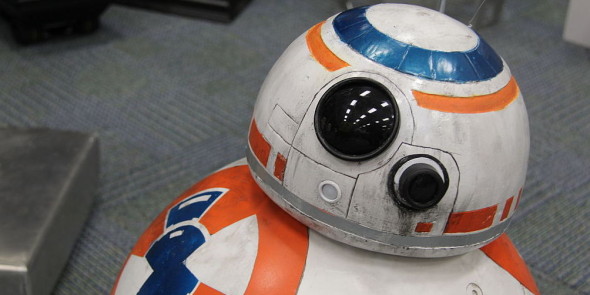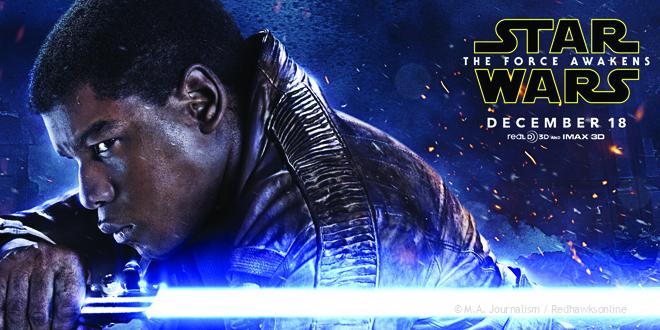A long time ago, in a galaxy far,
far away…
Amidst the dry hills of the deserts of Tatooine, a series of beeping noises can be heard on the wind. Two metal creations wander through the sand peaks, wheels and feet shuffling along the dusty ground. Another group of loud beeps sound, with a quavering humanoid voice following.
“What a desolate place this is,” says C-3PO, concerned. More beeps follow, the language of his companion, R2-D2, who starts moving away. “Where do you think you’re going?” C-3PO questions. “Well, I’m not going that way.”
R2-D2 lets out a long string of tones, offending his friend, who cries, “Don’t get technical with me!”
The two droids bicker amongst themselves, eventually moving in opposite directions. This playful banter between C-3PO and R2-D2 occurs early on in the first Star Wars movie ever released, now called A New Hope. The intelligent, arrogant air of R2-D2 combined with C-3PO’s constant worries and doubts leads to a representation of two droids that have humored audiences for many years.
In today’s world, droids and robots are becoming more and more present. The number of professional service robots that were sold in 2014 rose 11.3 percent from the previous year, according to the International Federation of Robotics. While technology becomes more advanced, robots are beginning to play a larger role in our society, something that was only a figment of imagination 30 years ago.
The Star Wars series has always been known for its galactic adventures and its incorporation of imaginative technology and robotics.
“You go all the way back to episode one, where you’ve got young Anakin building C-3PO, and you’ve got R2-D2 playing a huge role,” said Senior Sam Pickerign. “Even though it’s a long long time ago in a galaxy far, far away, [the robots] represent a futuristic view of things.”
As the years have passed since the first film was released, the creative, futuristic droids that were once pure fancy of the creators and movie producers are now becoming reality.
“I don’t know if it was George Lucas who was coming up with all these ideas, but you look at the robotics put in the films, like the robotic doctors and the hands…That is all stuff that’s happening now,” said Minnehaha’s Assistant Technology Director DJ McClain, who may be the school’s leading Star Wars fan and expert. “This was in 1977 and they were figuring out things that were possible in the future, and here we are.”
In just a few decades, the way our society uses robotics has changed dramatically.
“What was truly science fiction in 1977 is closer to being reality with robots now,” said Dr. Andrew Williams, Director of Humanoid Engineering & Intelligent Robotics Lab at Marquette University in Wisconsin. “We have more and more examples of robots that have more autonomous capabilities, more vision. The computing power and the memory capacity of the computers and the speed and having GPS readily available. Having better computer vision algorithms, faster processors on robots, better sensors…I think there’s been a huge advance with technology since 1977. It makes Star Wars robots much more realistic to have today or in the near future.”
When A New Hope was released in 1977, the droids in the movie such as R2-D2 and C-3PO were often manually operated or puppeteered using wires and strings, with small amounts of basic remote control used. R2-D2, an astromech droid, was operated for the movie by British actor Kenny Baker, who wore the metal cylinder around his body and manually shifted the heavy controls inside to move the robot around. Protocol droid, C-3PO, known for his worry wart personality and humorous concerns, was played by Anthony Daniels, who filmed scenes wearing the metal droid’s suit as well as did recorded voice overs.
A new astromech droid, BB-8, will appear in Star Wars: The Force Awakens, the seventh movie in the series which comes out on December 18. BB-8 is a rolling robot, whose head “floats” in center alignment while the rest of his spherical body moves. This advanced concept is achieved with a robotic system of counterweights and wheels inside BB-8’s body, a feat in modern robotics that could not have been achieved in the 70s. Unlike the older movies, there will not be an actor inside of BB-8.

BB-8, a new astromech droid, will appear in Star Wars: The Force Awakens. Photo Courtesy of Wikimedia Commons.
Today, robotics also appear in prosthetic limbs, factory assembly lines and space exploration devices, as well as in multiple other areas.
“The most popular household robot is the iRobot vacuum cleaner,” said Williams. “Robotic features are showing up in cars now, with the ability to assist the driver in knowing when to stop, detect when to slow down and helping the driver park.”
Though they are starting to appear now, Williams expects that robots will play a greater role in the future.
“Right now we are interested in working on robots that can help kids with exercising, as a humanoid health coach,” he said. “We are also interested in humanoid robots that can help kids learn how to program, or maybe even be a tutor for math and science.”
A different side of things, McClain believes that droids will be placed in more character roles in the coming years.
“I think that as fantasy has become reality, reality is now opening up more fantasy,” said McClain. “People’s minds will expand and they will think new roles for robotic characters. People love C-3PO and R2-D2 , and the new [robot, BB-8], that’s going crazy. I think people are excited about robots as characters.”
While the Star Wars series is often known for its creative uses of robotics and droid characters, the story itself has the ability to captivate audiences and inspire imagination in people of all ages.
“This might sound silly, but Star Wars became my life at that point [when I first saw it],” said McClain. “Any time I played in the woods, I was Han Solo. He’s my favorite character. If I got together with my friends, that was what we were playing. I started playing with all the Star Wars action figures. It took over my life [at that age].”
Williams has also been impacted by the films.
“I think it contributed toward my science fiction appreciation and imagination, my interest in science and engineering, space travel robots,” he said. “It’s fun to think that something that was totally science fiction…I’m working on now, to help it become a reality.”

